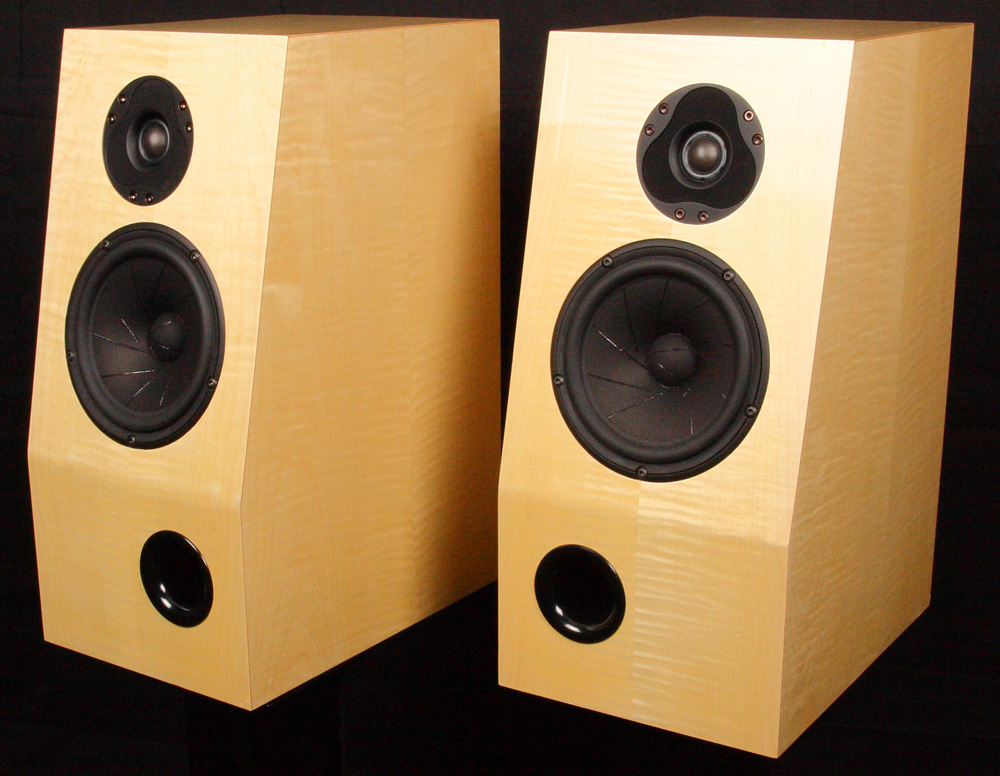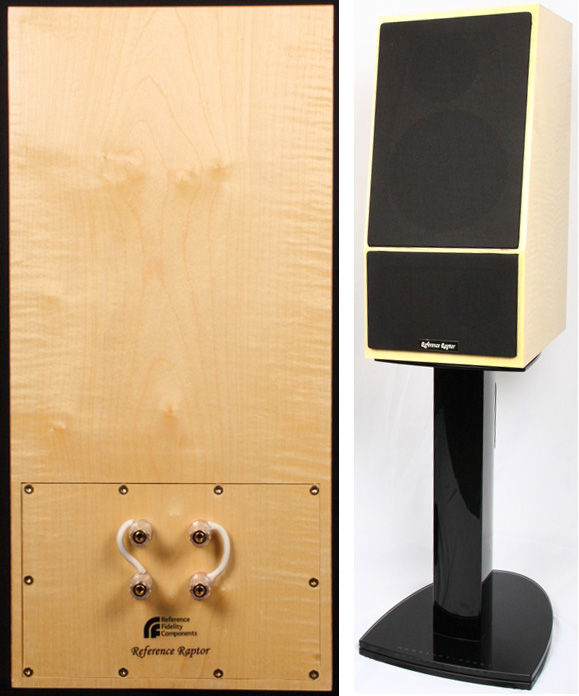Are speakers the most critical element of the audio chain? That’s certainly the view of a lot of audiophiles, and it’s almost universally the view of speaker vendors.
Myself, I’ve a feeling that to place the speakers alone at the top of the system tree is perhaps to miss a crucial point: speakers live and work in listening rooms, not anechoic chambers. Many of us have heard certain speakers sounding wonderful in one particular room, and then sounding really out of sorts in another. Take a look at the classifieds on any audio forum you choose: “Lovely speakers. So sad to let them go, but I can’t get them to work in my new room.”
Rooms have a profound effect. Height, width and length can all combine to ambush a simple frequency sweep with excitation nodes and suck-outs. By the time it arrives at the listener the sweep tone that started out with an even sound pressure level for its duration has become damaged, turned into a succession of volume peaks and troughs. Being more complex, music makes this corruption less obvious, but familiarity with a particular track will allow most people to spot particular ranges on a piano sounding quieter or louder than others, or perhaps find some bass notes sound uncomfortably boomy and slurred while hearing others as quieter and better articulated.
Is it truly useful then to consider a speaker in isolation, or are we better to consider a speaker and the room it stands in together, as two individual yet interrelated parts of a system that combine to convert electrical signals into sound pressure? This, of course, is both the reality and the nightmare for all speaker designers: the speaker drives the room, the listener hears the sum, and yet the speaker designer can no more control the room than they can control the national debt. Sure, acoustic treatments such as traps and diffusers can often mitigate the most glaring negative effects, but many audiophiles can’t be persuaded about them: they either don’t have the space for such devices, or their housemates wouldn’t tolerate the often industrial appearance, or it’s yet more money that the household doesn’t have.
I’ve not heard many speaker vendors openly discuss this point. Paul Coupe of Reference Fidelity Components is one who does – and willingly, too. Before you buy a pair of RFC speakers from him not only will he want to know what your proposed partnering electronics are but he’ll want listening room dimensions and furnishings too. He will then tell you plainly whether what you want to buy will work well in such an environment or not. He’d rather lose a deal than later see his product in the classifieds because it proved fundamentally unsuited to the buyer.
Coupe tends towards self-effacement in the English way, but he is nonetheless a seriously serious audio designer with a slew of design commissions for audio brands under his belt and a steadily growing band of customers for his range of products from interconnects and turntable tweaks to speakers – all his own design and manufacture. For a small operation, Reference Fidelity Components has customers remarkably far and wide – many in the U.S. and Australasia, and many more again throughout Europe. RFC doesn’t sell through distributors or hi-fi retailers, preferring instead to deal direct with customers. Coupe says both parties win: he gets a better margin that enables investment in costly tools and components to aid new product development while customers pay less than they would if they’d visited a dealer.
This might sound to some like Reference Fidelity Components is breathing its own fumes, but this is genuinely one instance where marketing speak is borne out by reality. RFC’s latest speakers, the Raptors are the subject of this world premiere review. They sell at around $3,500 (including shipping) in the U.S., a price point that pitches them amid on-paper competitors from a number of major audio brands. In Europe, prices start at £2,700 including shipping. But look at the quality of the component parts used in the Raptors, learn about the design process and what Coupe was aiming to achieve. The Raptors already look like a serious bargain.
With dimensions of 520mm tall, 245mm wide and 350mm deep, the Reference Fidelity Components Raptor is a mid-size stand-mount, two-way design with a broken angle front baffle to aid time-alignment. With an efficiency of 87 dB and presenting a nominal 6.4 Ohm load, the Raptor can be driven by PP tube amps of 40 Watts and up, or solid state of 60 Watts and above. The Raptor’s benign nature means it will work agreeably with some SET amplifiers at moderate volume, but that’s not really the partnering it was designed for. If that’s your amplification of choice, Coupe will steer you towards his RFC Rhapsody speaker, which is designed to work with SETs and, on the basis of what I heard of them during a half hour audition at his premises on the end of an Emille Ki-40L amplifier, it does a very engaging job of it.
But back to the Raptor. Before I collected the audition pair from RFC – these being only the second pair off the production line – Coupe had sent me emails over several months detailing the design goals and prototyping process, the tweaking and testing of the crossover, final testing by an independent acoustic engineering consultancy and finally the first production build in text and pictures. From my end it was rather like observing a slow motion birth. To say the development of the Raptors was a labour of highly informed and professional love would be to undersell it. But, do words such as “even response” and “uncoloured” make your heart sink? They do mine. I’ve read them so many times about speakers that boasted a stellar engineering pedigree but which, when I’ve eventually heard them, simply failed to make music. In our email exchanges Coupe used those words too, and frankly I was in a state of some anxiety as I drove to collect the review pair of Raptors – would they turn out to be a disappointment?
- (Page 1 of 3)
- Next page →



After reading this review, I can only mention that many “audiophiles” should be focusing on the room as much, if not more than the equipment being purchased. I know, that most of us just want a good/great stereo and that’s where we typically spend our money, but if we spend the time to have our rooms properly treated for broadband absorption, low frequency absorption (probably the most costly and the biggest problem associated with small room acoustics) and diffusion, the speakers will be a lot easier to drive and to sound their best. I’ve been in rooms that had proper room treatment and they made what was considered to be mid-fi speakers sound like a high end system and it will have a profound effect on higher end systems. What I have seen/heard is that the room can make/break a system. So, for those people that sell their speakers saying they can’t get them to work in their room, then it’s probably the room that needs to be treated so you can get the room to work with the speakers.
Right on, except you can also tune your room to sync with your speakers for a unified, accurate, very musical sound simply with digital EQ, pulse control, digital phase control and digital time alignment of all drivers involved. The only thing digital sound control cannot fix is excessive reverberation such as slap echo and room with wall construction that is way too stiff and has no flex to them (such as a concrete wall. Only room mechanical room conditioning with absorbent and sound wave scattering devices can remedy the issues those type of room situations cause.
Digital room sound control as mentioned above cost less, is clearly adjustable to the speaker AND the room to put them both together as an idea musical instrument reproduction system that is accurate and real sounding. Further, should you move from your apartment or sell your home, you don’t have a lot of room sound conditioning to tear out. With digital, its portable and can be used again to configure the next sound room in which you set up your speakers. In other words, “think out of the box”… think digital control, tuning and conditioning of your speakers AND the room together. It cost far less, takes way less work and as an audiophile, it is fascinating and fun to set up on a lap top computer, then disconnect your computer and its set to work perfect every time you spin up your favorite music.